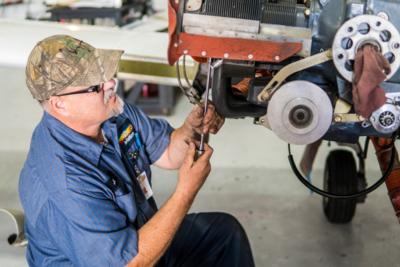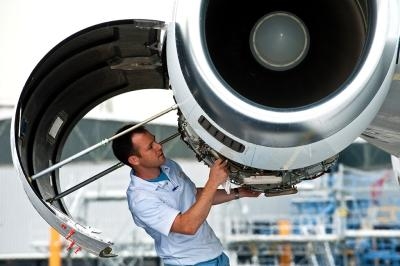“It Is Difficult To Overstate Just How Much The Pandemic Devastated Commercial Aviation”
The Aviation Technician Education Council has released its 2021 report on the outlook for A&P training and mechanic students.

The training industry has stumbled, reeling from the effects of 2020’s lockdowns and erratic economy, seeing 30 percent fewer A&P mechanic certificates issued than in 2019, producing the lowest number in the last 20 years. Unsurprisingly, disruption on the student pipeline affected the industry differently from other, more fortunate, segments of aviation. While business operators were logging increasing hours, and accumulating backorders, many schools were tossed unprepared into the milieu of online coursework and remote learning, a poor way to learn a very hands-on trade. ATEC does note, however, that the drop in students may be rectified this year, if the students that dropped from programs in 2020 had planned to return once lockdowns ended.
Were it not for the COVID-19 interruption, student certifications would likely be higher than ever, if 2019’s record size is any indicator . In that year, more FAA mechanic certs were issued than in any of the previous 17. While difficult for employers, mechanics will enjoy the added demand for their services. Commercial passenger traffic is expected to recover by 2024 worldwide, lagging behind the American domestic market which has almost reached 2019 traffic levels. The report makes mention of changing travel patterns shrinking regional jet fleets in some markets, but expanding operations in larger hubs.

It cautions that the industry may not expect a 1:1 recreation of “business as usual circa 2019”, saying: “Although there is confidence in a near-term, across-the-board recovery, the 2025 commercial industry will look different from the one that thrived heading into the pandemic.”
The total population of FAA mechanics is expected to increase by 13% over the next 20 years, but still fall short by 12,000 just to meet commercial aviation needs by 2041, not to mention business and general aviation needs. Some representation gains have occurred in the last year, with AMTS reporting 11% of recent A&P graduates being female, compared to 2.6% of the field at large. 40% of graduates now represent a minority, vital to replenish the quickly declining stocks of a predominately white (63%) and aging workforce, with 36% over 60.

The shortfall can be made up, however, with the right efforts at enrollment and recruitment. Last year saw 10 new A&P programs created, the biggest jump in the last 10 years. The total number of FAA-authorized students at max capacity nationwide is 37,266, but actual enrollment is a fraction at 20,605 students on average. When asked what factors leave 2 out of every 5 AMTS seats unoccupied in class, program directors cited insufficient awareness of the job as a career path, as well as the difficulty in retaining skilled and qualified faculty. The career outlook for the individual mechanic looks bright in many respects, though difficult for a shorthanded industry, the availability of airframe and powerplant technician certification is now a target for ATEC, who has pivoted their foundation, Choose Aerospace, to work with high school students to give added exposure to a hungry industry.
 Classic Aero-TV: In Praise of Alabamas Patriot Aircraft USA
Classic Aero-TV: In Praise of Alabamas Patriot Aircraft USA NTSB Final Report: Cirrus Design Corp SR22
NTSB Final Report: Cirrus Design Corp SR22 ANN's Daily Aero-Term (12.21.25): Dead Reckoning
ANN's Daily Aero-Term (12.21.25): Dead Reckoning ANN's Daily Aero-Linx (12.21.25)
ANN's Daily Aero-Linx (12.21.25) Aero-News: Quote of the Day (12.21.25)
Aero-News: Quote of the Day (12.21.25)





